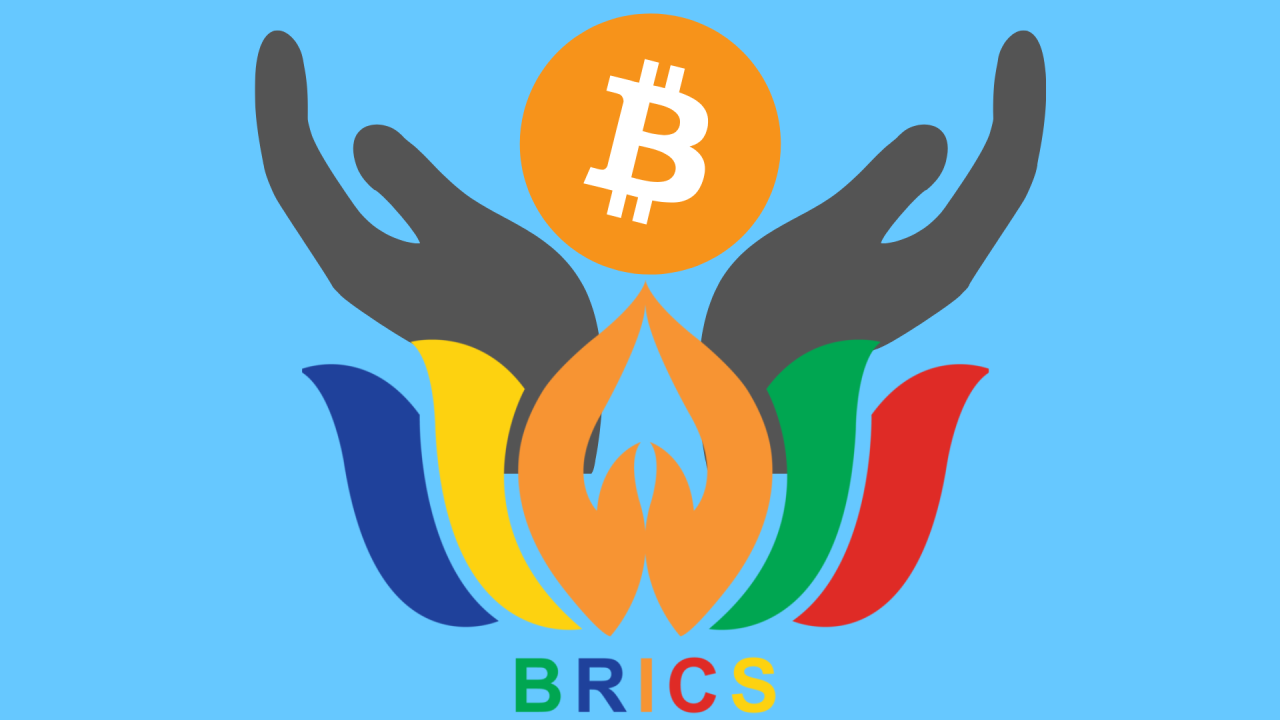BRICS: Alliance Exploring Bitcoin Adoption for Global Trade
29.10.2024 17:00 1 min. read Kosta Gushterov
In a recent interview on CNBC’s “Squawk Box,” Matthew Sigel, VanEck’s Head of Digital Assets Research, discussed Bitcoin's potential impact on global trade dynamics, particularly among BRICS nations.
He anticipates that the U.S. may face economic repercussions, including a possible debt downgrade from Moody’s after the upcoming election, which could enhance Bitcoin’s status as a global asset.
The BRICS bloc—now expanded to include Egypt, Ethiopia, Iran, Saudi Arabia, and the UAE—has a combined GDP surpassing the G7. Sigel noted that countries like Argentina, UAE, and Ethiopia are already involved in government-backed Bitcoin mining initiatives, reflecting their urgency to reduce reliance on the U.S. dollar.
Russia is also advancing its Bitcoin mining capabilities through a partnership between BitRiver and the Russian Direct Investment Fund (RDIF), focusing on creating facilities for Bitcoin mining and AI across BRICS nations. Sigel suggested that this could pave the way for using Bitcoin in international trade.
He remains bullish on Bitcoin’s long-term prospects, predicting it could reach $100,000 to $200,000 soon, with U.S. fiscal challenges acting as a catalyst. VanEck’s model envisions Bitcoin becoming a reserve asset by 2050, potentially valued at $3 million if integrated into global trade.
-
1
Bitcoin: What to Expect After Hitting a New All-time High
10.07.2025 14:00 2 min. read -
2
Peter Brandt Issues Cautious Bitcoin Warning Despite Bullish Positioning
10.07.2025 20:00 2 min. read -
3
Vanguard Now Owns 8% of Michael Saylor’s Strategy, Despite Calling BTC ‘Worthless’
15.07.2025 17:09 2 min. read -
4
Standard Chartered Becomes First Global Bank to Launch Bitcoin and Ethereum Spot Trading
15.07.2025 11:00 1 min. read -
5
What’s The Real Reason Behind Bitcoin’s Surge? Analyst Company Explains
12.07.2025 12:00 2 min. read
Ethereum Flashes Golden Cross Against Bitcoin: Will History Repeat?
Ethereum (ETH) has just triggered a golden cross against Bitcoin (BTC)—a technical pattern that has historically preceded massive altcoin rallies.
Bitcoin Banana Chart Gains Traction as Peter Brandt Revisits Parabolic Trend
Veteran trader Peter Brandt has reignited discussion around Bitcoin’s long-term parabolic trajectory by sharing an updated version of what he now calls the “Bitcoin Banana.”
Global Money Flow Rising: Bitcoin Price Mirrors Every Move
Bitcoin is once again mirroring global liquidity trends—and that could have major implications in the days ahead.
What is The Market Mood Right Now? A Look at Crypto Sentiment And Signals
The crypto market is showing signs of cautious optimism. While prices remain elevated, sentiment indicators and trading activity suggest investors are stepping back to reassess risks rather than diving in further.
-
1
Bitcoin: What to Expect After Hitting a New All-time High
10.07.2025 14:00 2 min. read -
2
Peter Brandt Issues Cautious Bitcoin Warning Despite Bullish Positioning
10.07.2025 20:00 2 min. read -
3
Vanguard Now Owns 8% of Michael Saylor’s Strategy, Despite Calling BTC ‘Worthless’
15.07.2025 17:09 2 min. read -
4
Standard Chartered Becomes First Global Bank to Launch Bitcoin and Ethereum Spot Trading
15.07.2025 11:00 1 min. read -
5
What’s The Real Reason Behind Bitcoin’s Surge? Analyst Company Explains
12.07.2025 12:00 2 min. read


